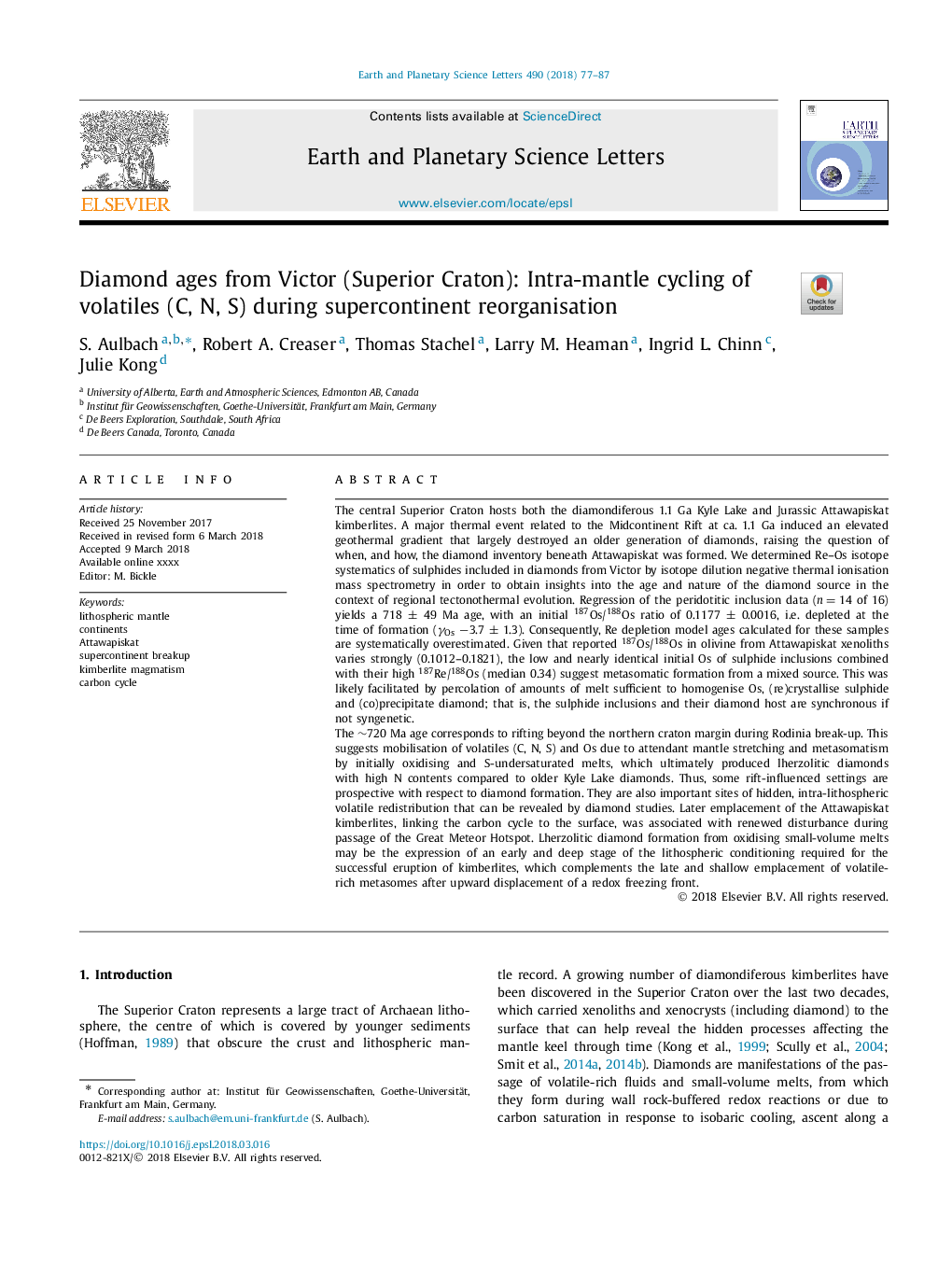| Article ID | Journal | Published Year | Pages | File Type |
|---|---|---|---|---|
| 8906975 | Earth and Planetary Science Letters | 2018 | 11 Pages |
Abstract
The â¼720 Ma age corresponds to rifting beyond the northern craton margin during Rodinia break-up. This suggests mobilisation of volatiles (C, N, S) and Os due to attendant mantle stretching and metasomatism by initially oxidising and S-undersaturated melts, which ultimately produced lherzolitic diamonds with high N contents compared to older Kyle Lake diamonds. Thus, some rift-influenced settings are prospective with respect to diamond formation. They are also important sites of hidden, intra-lithospheric volatile redistribution that can be revealed by diamond studies. Later emplacement of the Attawapiskat kimberlites, linking the carbon cycle to the surface, was associated with renewed disturbance during passage of the Great Meteor Hotspot. Lherzolitic diamond formation from oxidising small-volume melts may be the expression of an early and deep stage of the lithospheric conditioning required for the successful eruption of kimberlites, which complements the late and shallow emplacement of volatile-rich metasomes after upward displacement of a redox freezing front.
Related Topics
Physical Sciences and Engineering
Earth and Planetary Sciences
Earth and Planetary Sciences (General)
Authors
S. Aulbach, Robert A. Creaser, Thomas Stachel, Larry M. Heaman, Ingrid L. Chinn, Julie Kong,
